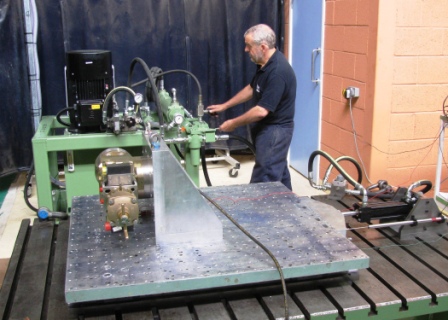Latest News
What's the difference between the UL and MET Listed Marks?
The UL and MET marks both indicate that the product has met the minimum requirements of the applicable [USA] safety standards. Additionally, both marks validate the product's continued compliance to these standards as evidenced by periodic factory follow-up inspections.
EX-cellent CE marking
EX product certification for Europe is governed by the ATEX equipment directive 94/9/EC under the European Commission's new-approach (CE marking) regime and is one of several directives or requirements relevant to equipment for potentially explosive atmospheres. Manufacturers may also have to consider the design, documentation, manufacturing and quality system implications for EMC, machinery safety, electrical safety and radio/telecoms compliance before applying the CE mark.
2010 brings in new CE requirements, set out in Council Decision 768/2008. The Decision also sets out restriction, prohibition and recall provisions for persistent non-compliance in equipment safety or supporting documentation. The Decision is likely to be applied, within twelve months, to all current directives.
In addition to regulatory aspects, functional (e.g. radio/telecoms) and/or environmental performance criteria (e.g. vibration, shock, wind, rain) may apply. TRaC provides notified body, certification body and testing laboratory services for these complementary directives, from its seven UK sites.
Achieving certification for countries that don't have a strong test infrastructure
Many countries have their own specific requirements for certification of products, but don't always have the infrastructure to test to these standards. This presents a problem - how can you get certified if no one in the country can test your product?
One example is Brazil, where telecommunication equipment is subject to Anatel (Agencia Nacional de Telecomunicacoes) certification in Brazil. These regulations state that telecommunication products should be tested by a suitable Brazilian third party test laboratory, but the services offered by these laboratories are limited.
Regulation of energy efficiency presents new certification challenges
There is a huge drive to improve energy efficiency from customers wishing to save on running costs, manufacturers trying to gain competitive advantage and also from governments.
The number of international energy efficiency standards is growing requiring manufacturers to not only think about efficiency during design, but also ensure that appropriate certifications are obtained.
Although regulation and encouragement of energy efficiency by governments dates back many years, with the American Energy Star initiative being probably the best known, new regulation is flooding onto the market.
And you thought your EMC tests were difficult!
All electronics engineers are familiar with EMC testing, generally viewing it as yet another challenge to be overcome by good design.
However,it's not just small electronic products that are affected: EMC is becoming an increasingly important element of large infrastructure projects.
In industries such as transportation infrastructure and power generation, the equipment can be physically large, the regulations stringent and the cost of failure pretty terrifying.
Can the CB scheme help your wireless product to market?
CB or not CB: that is the question. When you have worked in the telecoms and electronics approvals industry for many years, I think you tend to forget that to some people the compliance and approvals process can appear to be very complex. That's usually because it can be!
Take the manufacturer of a Bluetooth or ZigBee product. These radio modules are now incorporated into thousands of different product types, with a truly global market reach. So when it comes to compliance testing, the manufacturer usually knows that it needs to go through EMC and radio testing, but the safety aspect of the testing can often be overlooked; and when it comes to marketing the product in various countries around the world the proverbial brick wall can be encountered. This can be particularly frustrating as many different countries around the world have
Seven Reasons to Conduct Pre-Compliance EMC Testing
Many of our customers are choosing to conduct pre-compliance EMC testing throughout the design stage.
Here are seven reasons why it's a good idea:
TRaC extends vibration testing with low-frequency test rig
TRaC, the environmental and standards-compliance test house, has extended its capabilities in low-frequency mechanical vibration testing by commissioning a new low-frequency test rig at its Warwick laboratory. The new rig is one of the few commercially available systems that can apply a wide range of vibration tests, such as the demanding European Naval specifications, to large and/or heavy products and systems.
 The test system comprises a vibration platform measuring 1.3 x 1.3m, that can carry a test-piece load of up to 2 tonnes. The system is single-axis; that is, the platform's actuator moves it back-and-forth in one plane or direction, subjecting a unit-under-test (UUT) to vibration over a calibrated frequency range that extends as low as 0.1Hz, and up to 150Hz. UUTs can be subjected to a maximum acceleration of 5g at a frequency
The test system comprises a vibration platform measuring 1.3 x 1.3m, that can carry a test-piece load of up to 2 tonnes. The system is single-axis; that is, the platform's actuator moves it back-and-forth in one plane or direction, subjecting a unit-under-test (UUT) to vibration over a calibrated frequency range that extends as low as 0.1Hz, and up to 150Hz. UUTs can be subjected to a maximum acceleration of 5g at a frequency
Designing for ZigBee - Understand the standards before developing wireless products
In a rapidly advancing world that appears to rely more and more on technology, it is evident that wireless technology is becoming one of the most essential of them all.
Wireless devices are now found everywhere, from mobile phones to the headsets used to connect them. They are also found in automotive remote keyfobs, antitheft devices, home alarm systems, and the growing number of wireless modems in homes that provide access to the ubiquitous internet. These are only a few of the products which many have come to take for granted in the 21st century.
With wireless capabilities being incorporated into an increasing number of different types of products, there has been a concurrent growth in the different types of wireless technologies available, each of which may be better suited for different applications.
ZigBee is one of those wireless technologies that have emerged to cater
